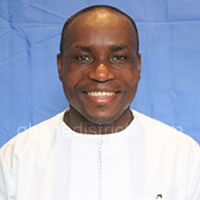Water Facilities
The water situation in the District has seen some improvement over the years with an increase in the number of facilities and coverage.
At the end of the plan period (2010 - 2013), 275 new water facilities and 1,488 sanitation facility would be provided throughout the district and spread within all the seven (7) area councils. These facilities are made up of 17 pipe systems, 189 boreholes, and 70 hand-dug wells, and 79 kvip, 1,040 vips and 369 WCs. The details of these facilities are depicted in the matrix in the tables below. This gives a through picture of the current coverage of the population which then assisted in the selecting the communities that need specific water facilities in the district. The same procedure was used in arriving at the sanitation facilities in the district.
The towns and facilities that need to be provided with water and sanitation facilities for the plan period are depicted in the matrix in table.
The underlisted are some of challenges at the water sector and their development implication:
• Pressure on limited water facilities resulting in frequent breakdown of water facilities.
• Inadequate water facilities in both public and private institutions.
• Weak management of water facilities resulting in collapse of some water systems, due to misappropriation of funds
• Resistance to payment for water services, resulting in high turnover in repairing spoilt facilities
Sanitation
The sanitation situation in most communities in the District, with Aiyinase as an example, is very appalling. The practice of disposing of solid waste materials in gutters, main drains, open spaces and the sea is very common, with special emphasis on communities like Esiama, Teleku- Bokazo and others. Indiscriminate defecation along the beaches is common among the Coastal Community like Ankobra. Waste disposal in the District is therefore not very well organized. Most communities also lack drainage systems, while the few existing ones in the big towns like Esiama and Nkroful are often choked with solid and liquid waste resulting in stagnant waters. This situation does not only pose serious health and environmental hazards but also, most importantly, tend to undermine the huge tourism potential of the District.
A major cause of the insanitary conditions was the lack of adequate toilets and waste disposal facilities. The District has very limited waste handling equipment or system in place. It has only two refuse dump and final disposal sites for both solid and liquid wastes at Aiyinase.
The situation of toilet facilities in the District is far from satisfactory as about 70% of the Households lack them. The W.C and KVIP Latrines are not very common with the Households possibly because of the high cost of construction and also the need for availability of water especially for the W.Cs. The pit latrines which are common in most of the Rural Communities have serious health and environmental implications. The fact that majority of households in the District use either the Public facility or open places, is a reflection of the absence of toilets in most dwelling Units.
Efforts must be made to enforce Building Laws and Regulations in relation to provision of sanitation Amenities in all residential Accommodation, especially in the emerging Residential Areas. Efficient management of Public Toilets and delivery of sanitary services must be vigorously pursued.
On the whole, the general sanitary situation in the District is so unhealthy that the People are therefore prone to epidemic outbreaks of preventable disease like Malaria, Diarrhoea and Anaemia and steps must be taken to improve the situation so as to enhance the health status of the people
Date Created : 11/20/2017 4:06:07 AM





 facebook
facebook X (twitter)
X (twitter) Youtube
Youtube +233 593 831 280
+233 593 831 280 0800 430 430
0800 430 430 GPS: GE-231-4383
GPS: GE-231-4383 info@ghanadistricts.com
info@ghanadistricts.com Box GP1044, Accra, Ghana
Box GP1044, Accra, Ghana